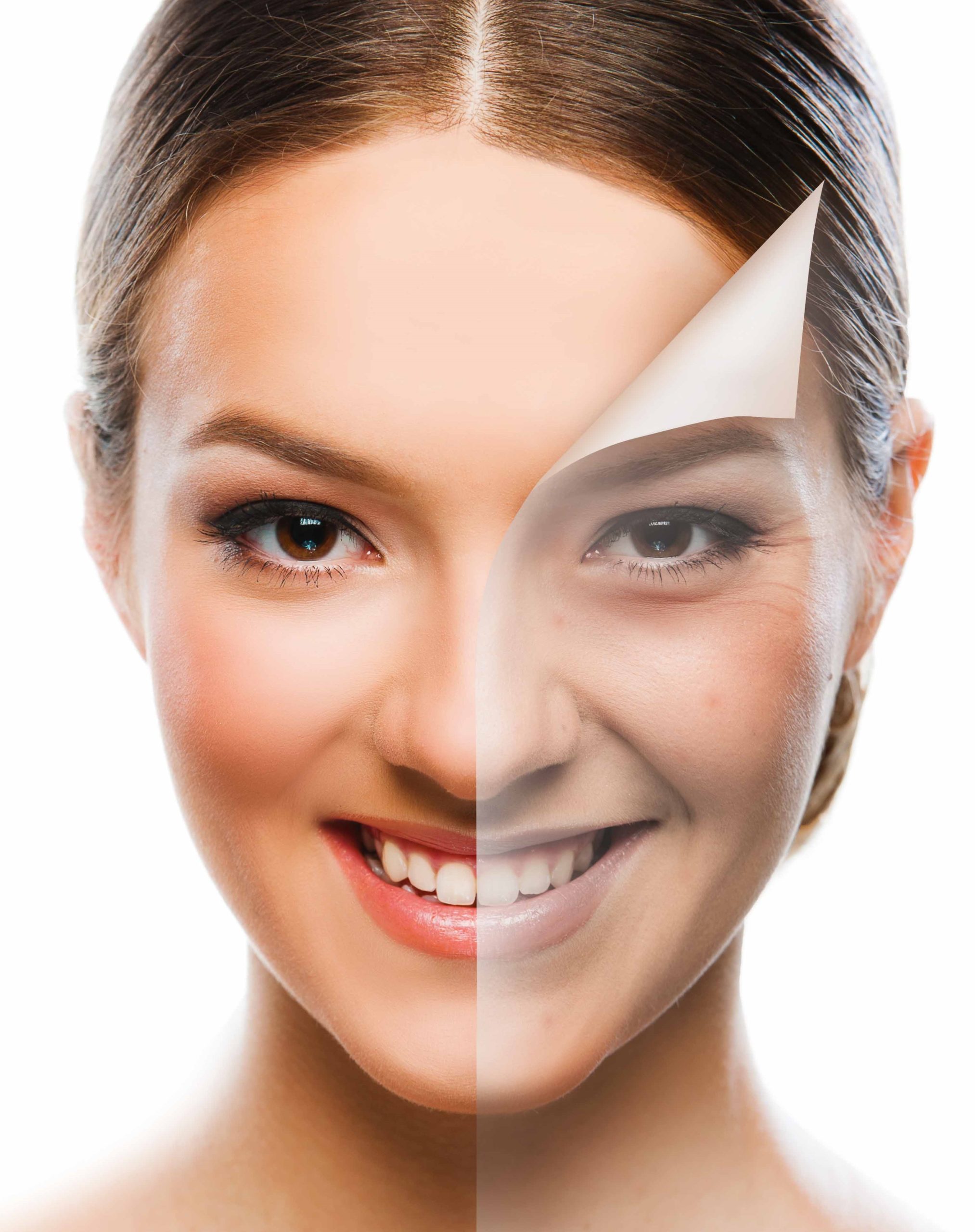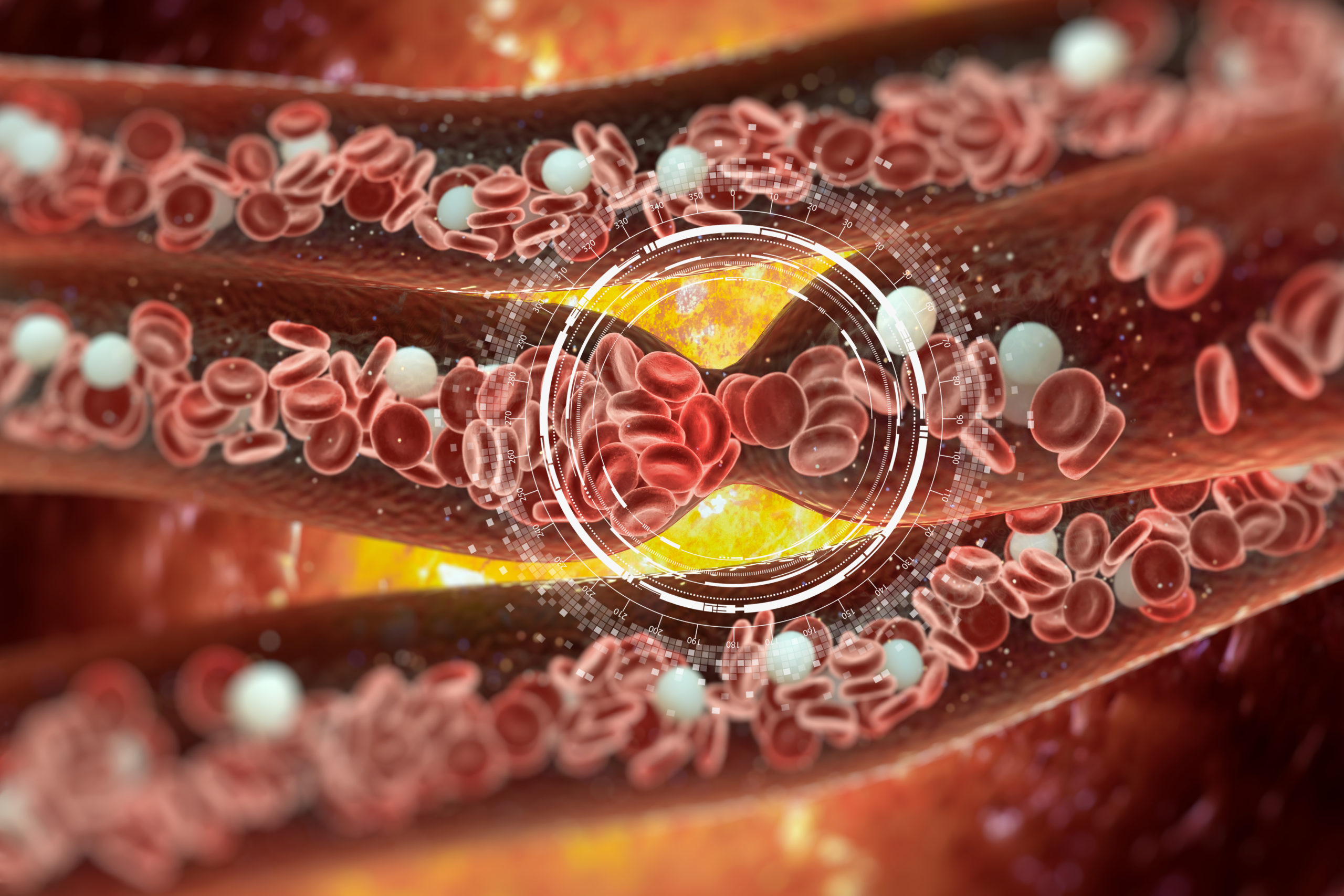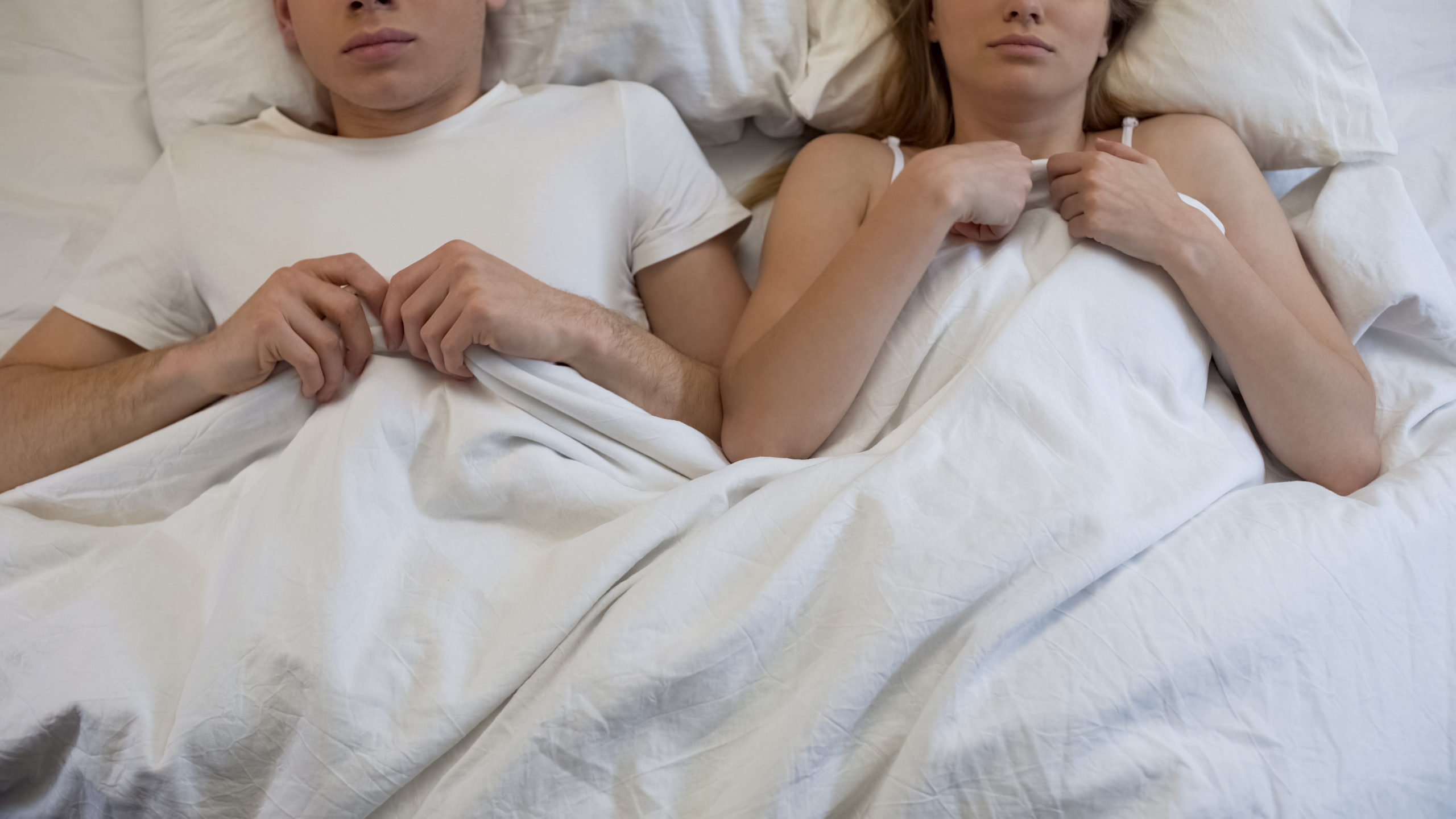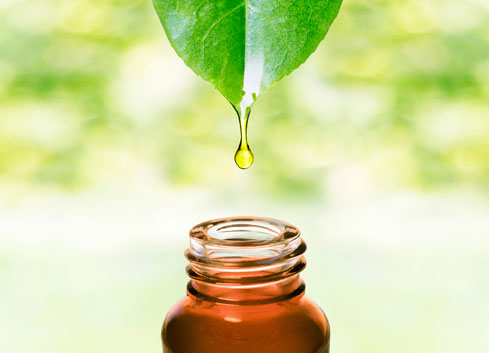
The power of the parent essential oils – the PEO solution
November 26th, 2016The power of the parent essential oils – the PEO solution
By Professor Brian Scott Peskin
Professor Brian S. Peskin, BSEE-MIT, Founder of Life-Systems Engineering Science, is the world’s foremost international lecturer and authority on physiologic plant-based oils and the highly acclaimed author of the landmark book, The Hidden Story of Cancer. A graduate of the prestigious Massachusetts Institute of Technology, he received an appointment as adjunct professor, Department of Pharmacy and Health Sciences at Texas Southern University (1998-1999). Physicians around the world rely on his insights and conclusions. Prof. Peskin is the “Physician’s Resource for PEO-based Solutions.
What you are about to read may shock you, but the information is not opinion. The hypotheses are based on state-of-the-art medical science. This paper provides the truth about EFAs–essential fatty acids–what they are and what they aren’t.
What is currently erroneously termed an EFA isn’t actually an EFA. I am often asked how my EFA-based recommendations differ from others. The answer is simple but very significant. The term “essential fatty acids” is being misused so frequently that I was compelled to coin a new phrase, Parent Essential Oils (PEOs). This term “Parent Essential Oils” refers to the only two true essential fatty acids: Parent omega-6 (linoleic acid, or LA) and Parent omega-3 (alpha-linolenic acid, or ALA). The term “Parent” is used because these are the whole, unadulterated, fully functional forms of the only two essential fats your body demands, as they occur in nature
Once PEOs are consumed, your body changes a small percentage–less than 1%–into other biochemical entities called “derivatives,” while leaving the remaining 99% in parent form. State-of-the-art 21st century analysis with positron emission testing (PET) proves this fact. Twenty-five to thirty-three percent (25-33%) of every cell membrane’s lipids are supposed to be PEOs! For much more extensive science, please see my book, PEO Solution, co-written with one of America’s leading integrative physicians, Robert Rowen, M.D.
LDL-C (cholesterol) is the transporter of PEOs
Lowering LDL-C was a good 1st attempt at trying to reduce the adulterated Parent omega-6 in everyone’s diet. However, this method isn’t strong enough. That is why statins are only marginally (if at all) effective. The 21st century solution is to consume sufficient organic, unadulterated PEOs each and every day. Modern food processing and supermarket ease require their constant adulteration for long shelf life.
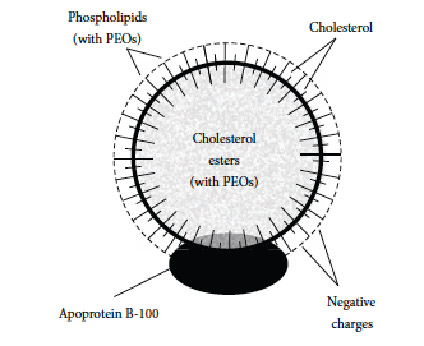
Figure 1: The structure and composition of a low density lipoprotein showing the significance of its large esterified—meaning chemically tied to PEOs–cholesterol structure in its center.
Today, most cooking oils are based on Parent omega-6 (LA). For long shelf life, food processors adulterate these oils making them no longer oxygen-absorbing or fully functional. One hundred trillion (100,000,000,000) defective cell membranes would be expected to cause enormous health problems–and they do–from cardiovascular disease, to cancer, to diabetes.
Even the finest restaurants use these adulterated oils! Ask yourself: How can we be so sick in spite of so many of us trying to do the right things regarding our health? There is only one logical conclusion. We aren’t solving the prime cause of our health problems–but now we can.
Importance of special fats called PEOs
Our bodies require special fats that make it possible, among other important functions, for sufficient oxygen to reach the cells. These special fats are highly oxygen-absorbing, and are called EFAs. However, it is the PEOs (Parent Essential Oils)–not the commonly mistermed EFAs–like EPA and DHA from fish oil–that are important.
PEOs consist of parent omega-6 and parent omega-3. “Parent” means they are the whole form of the essential oil as it occurs in nature before it’s broken down or built up into other biochemical substances, which are called “derivatives.”
Why are the parent forms, the PEOs so important? Many of the EFAs sold in stores consist of concentrated/processed EFA derivatives. Our bodies don’t need or want these overdoses of derivatives, because we make our own derivatives out of the Parent Essential Oils (PEOs) we consume, as we need them. Thus, taking fish oil and other health food store “EFAs” often overdoses patients with derivatives, which can be very harmful. However, PEOs are essential and must be supplied from outside the body every day, from foods and certain oils. Your body can’t manufacture PEOs (genuine EFAs, rather than EFA derivatives) on its own. PEOs MUST be consumed daily.

Figure 2: EFAs work like tiny ‘magnets’ drawing oxygen into all cells, tissues and vital organs, but reduce oxygen by one third and a cell turns cancerous!
Every one of our 100 trillion cells is surrounded by a bi-lipid membrane (a thin enclosure). The cell membrane is half fat. A portion of the fat making up the membrane is saturated. “Saturated” means chemically nonreactive–in other words, it doesn’t easily react with, or absorb, the oxygen and other biologic substances that come into contact with it. The other portion of the fat in the membrane is, however, “unsaturated” It on the other hand, DOES easily absorb oxygen.
One of the major functions of unsaturated (also called polyunsaturated) fats in the cell membrane is to facilitate the passage of oxygen into our cells. Were these essential fats absent in cellular membranes, cells would starve for oxygen–even if the blood was oxygen rich. The saturated fats in the membrane function as a barrier to help protect the delicate, highly reactive, oxygen-absorbing, energizing, unsaturated fats in the membrane–in particular, Parent omega-6.
The brain and nervous system comprise only 3% of total body weight. There are normally only small, trace amounts of these EPA/ DHA derivatives used in the brain, eyes and nervous system in the plasma, cellular membranes and tissues in the human body. Contrary to PEO requirements, extremely little is required for their daily replenishment. As shall be detailed shortly, marine and fish oil supplements in their suggested dosages, however, supply EPA & DHA in supraphysiologic amounts–often in excess of 100-fold, or even 500-fold amounts more than the body would ever naturally produce on its own!
It is a mistake to recommend a derivative when the fully functional, unadulterated “Parent” EFA—Parent Essential Oil (or PEO)–is required. Research demonstrates that fish oil supplements consistently fail to prevent cardiovascular disease (CVD), cancer, and significantly worsen diabetic patients’ condition by raising blood sugars and blunting (lessening) the critical insulin response.[1]
Organic, unprocessed, fully functional parent essential oils–linoleic acid (LA—omega 6) and alpha-linolenic acid (ALA— omega 3)–in the correct physiologic ratio (containing more Parent omega-6 than Parent omega-3) can:
- Help prevent and reverse existing cardiovascular disease, as is evidenced by the landmark cardiovascular screening IOWA Experiment (soon to be discussed);
- Help prevent and slow down existing cancerous tumor growth; and
- Significantly enhance cellular insulin sensitivity, to name a few….
Cellular oxygenation, the ultimate in antiaging science
Parent omega-6, particularly in the cell membrane, acts as a cellular “oxygen magnet.” That is why patients have increased energy with PEOs. PEOs are the ultimate “energy drink.” The relationship between linoleic acid and sufficient cellular oxygen-Parent omega-6 was confirmed in a seminal study published decades ago in Pediatrics.[2]
“We have already reported that, although the saturates, such as palmitates, have little or no affinity for oxygen, the unsaturates [including PEOs] are capable of undergoing reversible oxygenation in response to changes in oxygen pressure. Because two unsaturated carbon-carbon bonds are required for the reaction, each linoleic [Parent omega-6] molecule can bind with one molecule of oxygen with it, but two oleic molecules bind one-oxygen between them.” [Note: Parent omega-6 is twice as effective in oxygen transfer.]
- “Underwood’s group has shown that, in cystic fibrosis, the abnormality in fatty acid composition is not restricted to the erythrocytes and Interference with the movement of oxygen could then occur at any cell membrane so that there could be a general reduction in the supply of cellular oxygen throughout the body…”
- “…Such a condition could depress the rate of cellular respiration, phosphorylation and all energy-dependent ”
- “…It seems possible that many of their symptoms may result from essential fatty acid (linoleic) deficiency, leading to the decrease in the availability of cellular oxygen for ”

Figure 3: Now you can appreciate that PEOs supports a great deal of the body’s structure.
A quote from Robert Kagan, M.D., Radiologist (USA) (President Clinton appointee as the sole physician commissioner on the White House Fellowship Commission; Former Chairman of the Board of Nuclear Medicine Resource Committee of the College of American Pathologists; Past President of the Florida Association of Nuclear Physicians): “I previously wrote you about the remarkable cause/effect relationship in reversing plaque volume in a (smoking) patient taking conventional treatment, (i.e. statins, aspirin, Co-Q10). In reading over the [patient’s] scans, I have never seen such a remarkable result. When he [the patient] stopped the PEOs the plaque came back!”
A cause/effect relationship with the “power of the parents”
All-important longer chain structures are made from the Parents by the body on an “as needed” basis. These are technically termed “long-chain derivatives,” or (long chain) metabolites. I simply call them “derivatives.” The most well-known and significant derivatives are:
- GLA (omega-6 series) substrate for PGE1, the body’s most powerful anti-inflammatory and vasodilator.
- AA (omega-6 series) substrate for PGI2, the body’s most powerful natural “blood thinner,” platelet anti-aggregator, anti-adhesive, and vasodilator. Contrary to popular belief, AA is not harmful, required and is ubiquitous and contained by every cell membrane.
- EPA (omega-3 series) very small amounts are produced naturally.
- DHA (omega-3 series) very small amounts are produced naturally.
The omega-3 series derivatives are very weak compared to the omega-6 series derivatives. However, once fish oil became the “supplement du jour,” rationality disappeared. Fish oil proponents claim that because the elongation pathways are the same for both series, and because omega-6 is “bad,” then having less is relatively “better.” Such tortured logic potentially harms the patient.
Advisory
It is commonly thought and publicized that the real “power” of EFAs is solely in their long-chain metabolites (derivatives). However, this is categorically wrong and naïve. True, long-chain metabolites like GLA and AA–both of the Parent omega-6 series–are critical but there is more to the story….
PEOs are the “bricks & mortar” of each cell
There are about one hundred trillion (100,000,000,000,000) cells in the human body (more or less). Half of every cell membrane is fat. Every cell’s bi-lipid membrane contains 25%–33% PEOs.[3] Every mitochondrion—your cellular energy furnaces–typically hundreds to thousands per cell[4]–also contains PEOs. Evolutionary biologist Dr. Bruce Lipton understands how important the cell membrane is to “the intelligence” of the cell. Nobel Prize-winner Otto Warburg, MD, PhD stated: “… the plasma-membrane as such, and not because substances pass in–or-out through it, plays an important role in the oxidative metabolism [required for intelligence] of the cell.”[5]
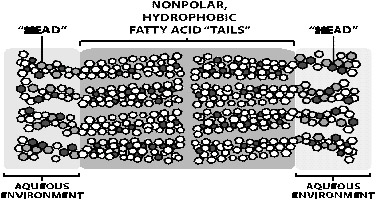
Figure 4: A Bi-lipid cell membrane: Note the extensive lipid fatty acid “tail” sections.
Old research from the 20th century was mistaken, and grossly overestimated the requirements for the derivatives of LA and ALA, which are DHA and EPA (docosahexaenoic acid and eicosapentaenoic acid) from marine oils. This is crucial to understand. As will be explained in more detail, patients unknowingly take overdoses of these derivatives in the form of fish oil and other supplements, rather than allowing their body to make the derivatives naturally from whole essential oils in the quantities actually needed. As a result, their medical problems are frequently not corrected, but are oftentimes made worse and both patient and physician have no idea why, but now you know why this occurs.
Newsflash: Your body makes “derivatives” from the parents “as needed”
A mistake of monumental proportions was made when the medical community incorrectly assumed that all “Parents” would be converted to “derivatives.” Decades ago, it was very difficult to quantitatively measure how much EPA/DHA was used in the brain (the largest depository).
This wrong assumption is harming millions of people. No one asked: Why are humans experiencing a fish oil deficiency all of a sudden? There was little fish oil supplementation in the 1940s through the 1970s. Did infants and adolescents suffer gross visual, neurological and brain impairments? No! This would be the case if there really were a deficiency. It is likely that no deficiency existed back then or exists today.
In actuality, there is extremely little conversion of the delta-6 and delta-5 desaturation enzymes. Nature intentionally made it this way. There is no “slow” or impaired enzymatic activity causing deficiency of long chain metabolites from Parent omega-3 in the vast majority of patients. Yes, alcoholism and diabetes do impair the delta-6 pathway affecting the production of PGE1—the body’s most powerful anti-inflammatory–from GLA (an omega-6 metabolite). This is why I recommend GLA-containing oil in all Parent-based formulations.
Today, inflammation is rampant in patients. Never forget that common adulteration of our cooking oils (all of which are omega-6-based) we are ingesting a toxin on a daily basis– adulterated Parent omega-6 (LA) from our food. Studies confirm that omega-3 derivatives are adequately produced by our bodies as the medical experiments below confirm:
No impairment of the Delta-6 desaturase enzyme in the general population
Contrary to wrong dogma, the enzymes that produce PEO derivatives (the delta-6 and delta-5 desaturase enzymes) are not impaired in the vast majority of patients.[6] Conversion of ALA [Parent omega-3] to DHA is unlikely to ever normally exceed 1% in humans.[7] Research at the United States Department of Agriculture’s USDA food composition laboratory (2001) reported a natural net conversion rate of a mere 0.046% of ALA to DHA and 0.2% to EPA–not the highly misleading 15% conversion rate that is often-quoted.[8] NIH researchers determined the amount of DHA utilized in human brain tissue to be a mere 3.8 mg ± 1.7 mg/day. Therefore, brain tissue in 95% of all subjects, allowing for variation in brain size, would require and use a mere 0.4 mg – 7.2 mg of DHA per day.5 New, twenty-first century quantitative research from both NIH and USDA show considerably lesser amounts of natural DHA conversion/usage from ALA than the medical community has been led to believe. These conversion amounts are extremely small and naturally limited. This mistake often leads to recommendations that are suprapharmacologic and can potentially overdose patients by factors of 20-fold to 500-fold, depending on the specific supplement and amounts consumed.
The body cannot simply oxidize these tremendous overdoses of EPA/DHA; they are too great a quantity. There are more confirming articles such as analyzing vegetarians and finding they produced sufficient DHA even though they consumed no fish! The medical science is clear.
WARNING: Fish oil overdose causes cancer, heart disease, diabetes and much more damage… 21st century medical science can’t be ignored!
Therefore, these overdoses end up on the skin, which is not meant to contain any of the Parent or omega-3 metabolites. They are far too reactive to heat damage. This is a prime reason for the explosion in skin cancer, even though many of us stay out of the sun. The omega-3 metabolites are also forced into the cardiovascular system causing heart disease. The inner layer of the artery, termed the intima, is supposed to be comprised solely of Parent omega-6; that is, until wrong fish oil recommendations overdose you! Prostate cancer and breast cancer in women would be expected for the exact same reasons. An article recently appeared with the same conclusion.20 Of course, the medical community and the fish oil sellers were up in arms. My analyses are in the following journal articles:
- “Why Fish Oil Fails to Prevent or Improve CVD: A 21st Century Analysis.”[9]
- “SELECT Trial Results Examined: Why Fish Oil, DHA and “Oily Fish” Are Inflammatory, Leading to Increases in Prostate Cancer, Epithelial Cancers and CVD,” and “nails the coffin shut” on the use of prophylactic fish oil in the general population.[10]
These articles should be required reading for all physicians and healthcare professionals. If physicians weren’t aware of the new 21st century medical science, they couldn’t be held responsible. But now they must be held responsible. If my articles aren’t sufficient, I have listed twenty-six (26) Inconvenient Truths about fish/marine oil that everyone needs to be aware of.
A particularly crushing blow to fish oil came from Eric Topol, MD, a prominent American cardiologist from the Scripps Institute:
Dr. Topol is editor-in-chief of Medscape, editor-in-chief of theheart.org (Medscape’s on-line newsletter for cardiologists), and was voted as one of the most influential physician executives in the United States in 2012. Dr. Topol has this to say regarding the NJM finding that fish oil is worthless for helping cardiovascular disease:[11]
“I have an awful lot of patients that come to me on fish oil, and I implore them to stop taking it. Fish oil does nothing. We can’t continue to argue that we didn’t give the right dose or the right preparation. It is a nada effect. It’s been a fishy story for a long time…. Fish oil is a ‘no-go.’ If it doesn’t work in this group [high risk patients], it’s hard to imagine in lesser-risk groups that it’s going to have any salutary impact.”
What more needs to be said? Nothing.
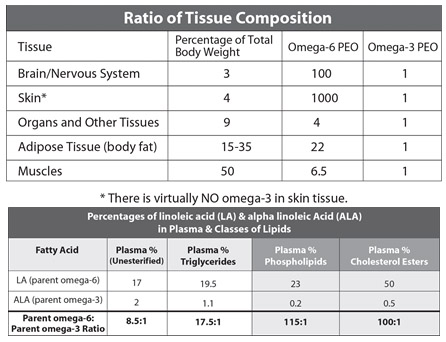
Figure 5: Physiology leads the way to the truth – your body only wants very little Omega-3[12]
PEOs vs fish oil—PEOs win every time
The most significant experiment to date is “Investigating Oils With respect to Arterial health” (IOWA). The world renowned IOWA Screening Experiment9 had amazing results. Although I designed the study, I did not participate in any aspect of the screening. Group I (long-term PEOs only) results were an average decrease in “biological age” the arteries of 8.8 years compared to their chronological age. Seventy- three percent (73%) of all subjects improved their cardiovascular system. The subjects’ arteries were almost 9 years biologically younger. Group II (short-term PEOs) results were an average of 7.2 years decrease in “biological age” of their arteries. Forty-three percent (43%) of subjects improved in a very short time frame.
Group III (stopped fish oil use and converted to PEOs) results were an average of 11.1 years decrease in “biological age”. Eighty seven percent (87%) of subjects improved in a very short time frame–the most significant improvement in any population. Fish oil consumption unequivocally made patients’ arteries HARDER! But fish oil is meant to be an “antiaging substance!” When renowned international authority in oxidative medicine Robert Rowen, MD—revered as America’s “Father of Medical Freedom” and Leader of Integrative Medicine for pioneering America’s first statutory protection for alternative medicine in 1990—saw this clinical result, he immediately became one of my strongest supporters. He also became my co-author for our new book, PEO Solution.
IOWA: Results with additional patient risk factors
Seven subjects had “high” cholesterol levels while taking fish oil supplements before changing to PEOs. Six of the seven patients decreased their cardiovascular “biological age” by ceasing fish oil and converting to PEOs—an 83% effectiveness rate in this sub-group. One subject with both “high cholesterol” and diabetes improved after replacing fish oil with PEOs. Two subjects taking statins decreased their cardiovascular biological age by 20 years after ceasing fish oil and replacing with PEOs.
The most remarkable finding was that subjects taking fish oil prior to PEOs obtained the most improvement! This was anticipated since they started at a greater deficit. Ceasing fish oil use allowed the arterial system to revert to “normal” instead of making the vascular system less flexible by its use. Once the vascular system was back to “normal,” the expected improvement from PEOs, as shown by the other groups, was also achieved, resulting in an even greater decrease in biological age.
It takes a full 18 weeks to fully rid patients of the negative effects of fish oil, as the superb 2003 British Medical Journal of Nutrition article makes clear.[13] The subjects in the IOWA experiment were measured at an average of 14 weeks after ceasing fish oil usage. If they had been measured at the full 18 weeks, we might have seen even greater decreases in arterial “biological age.”
We are misled time after time about what is best for us. For example, saturated fat was vilified for decades. We were told not to eat cheese, bacon, butter, or cream. However, it was known that there was no saturated fat in an arterial occlusion (clog). There are over 10 different compounds in arterial plaque, but NO saturated fat. The world’s leading medical journal, and published in the UK, the Lancet, published this finding in 1994.[14] Two additional medical journals independently reported–before and after the historic Lancet report–that there is no saturated fat in arterial occlusions.[15] Regardless of this unequivocal science, the opposite was published and parroted for decades.
How many patients were harmed and turned diabetic? Wrong health information given by those who are expected to know medical science, has ruined America and many western countries, turning us into obese diabetics. Don’t let this continue to happen.
Relatively little attention has been given to the Parent oils. Nevertheless, there are a number of studies comparing PEOs to the entirely derivative fish oil. The following conclusions are from a sampling of studies involving the physiology and biochemistry of the PEOs:
- “The reduction in fasting blood glucose and in the glucose area under the curve during the day was significantly greater with the n-6 [from lean fish] than with the n-3 [fatty fish] diet.”[16] [Showing 21% less insulin production with fatty fish compared to lean, non-fatty fish containing more PEOs. This should terrify patients, as diabetes has become the #1 epidemic in the world, and fish oil makes it worse].
- “ω-6 [Parent omega-6] Polyunsaturated fatty acids extend life span through the activation of autophagy.”[17] [Emphasis added]
- “Higher linoleic acid (Parent ω-6) was associated with reduced risks of low-grade and total prostate cancer.”[18] [In this landmark study, the men taking the most fish oil had the most prostate cancer!]
- “Parent omega-3 is significantly lower in patients with dementia and fish oil didn’t help.”[19] [If fish oil were to help anywhere, it must help in the brain for this condition, but it failed].
- “Wherever we saw fatty streaks (an early state of atherosclerosis), we also found a deficiency in EFAs (Parent Essential Oil’s LA)”.[20] [Proof that Parent omega-6 is a significant factor in Cardiovascular Disease.]
- “In this study, a vegetarian diet was found to sensitize subjects to insulin [an increased-positive response].” [21] [The researchers believed it to be related to a greater proportion of LA (Parent omega-6) in their serum phospholipids.]
Summary
Parent Essential Oils (PEOs) should always be used before marine oil or fish oil supplements. Fish oils, because of their steroid-like effect of impairing the immune system, should never be prescribed prophylactically. I sincerely hope this article causes you to re-evaluate everything you have been told about EFAs and to consider PEOs as your supplement of choice.
Recommended reading
The trilogy of Professor Peskin’s landmark books: The PEO Solution by Professor Brian Peskin, BSc-MIT and Robert Rowen, M.D., The Hidden Story of Cancer by Professor Brian Peskin with Amid Habib, M.D., and The 24-Hour Diet with Stephen Cavallino, MD (Italy). (www.Pinnacle-press.com)
[1] B. E. Karlstom, et al., “Fatty fish in the diet of patients with type 2 diabetes: comparison of the metabolic effects of foods rich in n-3 and n-6 fatty acids,” American Journal of Clinical Nutrition, vol. 94, no. 1, pp. 26–33, 2011; H. Glauber, et al., “Adverse metabolic effect of omega-3 fatty acids in non-insulin dependent diabetes mellitus,” Annals of Internal Medicine, vol. 108, no. 5, pp. 663–668, 1988; P. W. Stacpoole, et al., “Dose response effects of dietary marine oil on carbohydrate and lipid metabolism in normal subjects and patients with hypertriglyceridemia,” Metabolism, vol. 38, no. 10, pp. 946–956, 1989.
[2] Campbell I.M., Crozier D.N., Caton R.B., “Abnormal fatty acid composition and impaired oxygen supply in cystic fibrosis patients,” Pediatrics 1976; 57: 480–486.
[3] Alberts, Bruce, et al., Molecular Biology of the Cell, Garland Science, New York, NY, 1994, page 428.
[4] Murray, Robert K, et al, Harper’s Illustrated Biochemistry (26th edition), McGraw-Hill, New York, 2003: 97; Guyton, Arthur C & Hall, John E, Textbook of Medical Physiology (9thed.), W.B. Saunders Co. 1996: 16, 861–862.
[5] Warburg, Otto, “The Metabolism of Tumors: Investigations from the Kaiser Wilhelm Institute for Biology,” translated by Frank Dickens, Constable & Co Ltd., 1930, page 56 (out of print). Ref: Hoppe-Seylers Zeitschr. f. physiol Chem., 66, 305, 1910.
[6] J. C. Umhau, W. Zhou, R. E. Carson, et al., “Imaging Incorporation of Circulating Docosahexaenoic Acid [DHA] into the Human Brain Using Positron Emission Tomography,” Journal of Lipid Research, Vol. 50, No. 7, 2009, pp. 1259-1268. doi:10.1194/jlr.M800530-JLR200
[7] P. L. Goyens, et al., “Conversion of Alpha-Linolenic Acid in Humans Is Influenced by the Absolute Amounts of Alpha- Linolenic Acid and Linoleic Acid in the Diet and Not by Their Ratio,” The American Journal of Clinical Nutrition, 2006, Vol. 84, No. 1, pp. 44-53.
[8] N. Hussein, E. et al., “Physiological Compartmental Analysis of Alpha-Linolenic Acid Metabolism in Adult Humans,” Journal of Lipid Research, Vol. 46, 2005, pp. 269-280. doi:10.1194/jlr.M400225-JLR200.
[9] Peskin, B.S., Food and Nutrition Sciences, 2013, 4; 9A, 76-85. http://dx.doi.org/10.426/fns.2013.49A 1013 Published Online September 2013 (www.scirp.org/journal/fns)
[10] Peskin, B.S., Food and Nutrition Sciences, 2013, 4, 1128-1144 Published Online November 2013 (http://www.scirp.org/journal/fns) http://dx.doi.org/10.4236/fns.2013.411147
[11] From both Dr. Topol’s blog (www.theheart.org/columns/topolog/fish-oils-to-prevent-chd—-it’s-now-official-a-definite-no-go.do) and theheart.org (www.theheart.org/article/1536889.do), accessed May 10, 2013.
[12] Spector, A.A., “Plasma Free Fatty Acids and Lipoproteins as Sources of Polyunsaturated Fatty Acid for the Brain,” Journal of Molecular Neuroscience, Vol. 16, 2001: 159–165, “Most of the plasma-free fatty acid (EFA) is derived from the triglycerides stored in the adipose tissue [body fat].” [Note: Organs, including the brain, use these EFAs for structural incorporation.]; R.S. Chapkin, et al, “Metabolism of essential fatty acids by human epidermal enzyme preparations: evidence of chain elongation,“ Journal of Lipid Research, Volume 27: 954–959, 1986; Markides, M., et al., “Fatty acid composition of brain, retina, and erythrocytes in breast- and formula- fed infants,” The American Journal of Clinical Nutrition, 1994;60:189–94; Agneta Anderson, et al., American Journal of Endocrinological Metabolism, 279: E744-E751.
[13] “Fish-oil supplementation reduces stimulation of plasma glucose fluxes during exercise in untrained males,” British Medical Journal of Nutrition (2003), 90, 777–786.
[14] Felton, CV, et al., “Dietary polyunsaturated fatty acids and compositions of human aortic plaque,” Lancet; 344:1195–1196, 1994.
[15] Waddington, E., et al., “Identification and quantification of unique fatty acid and oxidative products in human atherosclerotic plaque using high-performance lipid chromatography,” Annals of Biochemistry; 292(2):234–244, 2001; Kuhn, H., et al., “Structure elucidation of oxygenated lipids in human atherosclerotic lesions,” Eicosanoids; 5:17– 22, 1992.
[16] Karlström, BE, et al., “Fatty fish in the diet of patients with type 2 diabetes: comparison of the metabolic effects of foods rich in n-3 and n-6 faty acids,” Am J Clin Nutr 2011;94:26–33.
[17] O’Rourke, Eyleen, J., et al., Genes & Development (2013). Published in advance February 7, 2013, http:// genesdev.cshlp.org/content/27/4/429.full.
[18] Brasky, Theodore, M., et al., “Plasma Phospholipid Fatty Acids and Prostate Cancer Risk in the SELECT Trial,” Journal of the National Cancer Institute, Vol. 105, No. 15, 2013, pp. 1132–1141.
[19] Cherubini, A., et al., “Low Plasma N-3 Fatty Acids and Dementia in Older Persons: The InCHIANTI Study, J Gerontol A Biol Sci Med Sci. 2007 October; 62(10): 1120–1126.
[20] Das, U.N., “A defect in the activity of D6 and D5 desaturases may be a factor in the initiation and progression of atherosclerosis,” Prostaglandins, Leukotrienes and Essential Fatty Acids, 76 (2007) 251-268.
[21] Kahleova, H., et al., “Vegetarian diet-induced increase in linoleic acid in serum phospholipids is associated with improved insulin sensitivity in subjects with type 2 diabetes,” Nutr. Diabetes, 2013 Jun 17;3.
